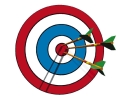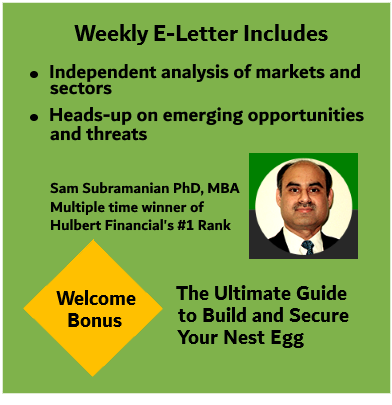Adopting novel fundamental indexes, PowerShares has expanded the options available for sector as well as thematic ETF investors.
PowerShares, a unit of U. K.-based Invesco PLC, is emerging as a strong player in the sector ETF arena. Starting off with two ETFs in 2003, PowerShares introduced 22 sector and industry group ETFs in 2005 and followed them with 21 similar offerings in 2006. PowerShares is expected to expand the lineup of sector and industry group ETFs further in the current year.
PowerShares ETF Index Selection & Application
Majority of ETFs use market capitalization weighted indexes such as those constructed by Dow Jones & Co. and Standard & Poor’s. Eschewing such passive, market capitalization-weighted indexes, PowerShares uses two novel types of indexes for their sector and industry group ETFs. PowerShares also offers some unique theme-based ETFs.
1. Dynamic Intelligent Indexes
A large number of PowerShares’ sector and industry group ETFs under the Dynamic series seek to track AMEX’s Intellidex indexes. Each sector or industry Intellidex index is composed of a limited number of stocks which are selected each quarter from companies within the sector or industry. Stocks within the sector or industry that are assessed to have high capital appreciation potential are identified using a variety of criteria such as fundamental growth, valuation, investment timeliness, and risk. The index is divided into large-cap, mid-cap, and small-cap sub-groups. Each market cap sub-group is allocated a collective weight and all stocks within the sub-group receive equal weight.
2. Fundamental Indexes
Nine PowerShares sector ETFs seek to track the corresponding FTSE RAFI sector index. The FTSE RAFI sector indexes consist of the largest U. S. companies in the sector as determined by four fundamental measures, book value, cash flow, dividends, and sales. An overall weight is calculated for each company by equally weighting each fundamental measure. Firms with the highest fundamental weight are selected and each firm is assigned a weight equal to its fundamental weight. The FTSE RAFI indexes are reconstituted annually.
3. Niche Plays
Certain PowerShares ETFs delve into unique industry groups. PowerShares Water Resources ETF (Amex: PHO) and PowerShares Global Water ETF (Amex: PIO) based on Palisades Water Index and Palisades Global Water Index, respectively are examples of niche industry ETFs in the utilities sector. Some PowerShares ETFs also focus on specific investment themes. PowerShares Lux Nanotech ETF (Amex: PXN) ventures into nanotechnology, a process with application potential in health care, information technology, materials, and industrial sectors. The Lux Nanotech index has holdings distributed across companies in these sectors.
AlphaProfit Take
By being willing to embrace novel indexes, PowerShares has expanded the investment options available for sector ETF investors. PowerShares offers ETFs that can be attractive for investors pursuing a GARP, value, or thematic approach to investing.
1. PowerShares ETFs for GARP Investors
Sector and industry group PowerShares ETFs in the Dynamic series offer a compromise between actively managed mutual funds and ETFs tracking low-turnover, static benchmarks. The Intellidex indexes used as benchmark for these ETFs apply rules-based criteria to select securities and are reconstituted quarterly. While specifics of the security selection process are kept proprietary, Amex has disclosed that factors such as fundamental growth and valuation are considered in security selection. By balancing growth with valuation-related parameters, the Intellidex indexes appear to seek ‘growth at a reasonable price’. As such, the Dynamic series of PowerShares ETFs may whet the appetite of GARP investors.
2. PowerShares ETFs for Value Investors
The weightings for securities in the PowerShares FTSE RAFI series of ETFs are derived from four fundamental or accounting measures, book value, cash flow, dividends, and sales. By weighting stocks on these four fundamental measures of size rather than market capitalization, the FTSE RAFI indexes seek to avoid over-weighting over-valued stocks and under-weighting under-valued stocks. The weighting factors used in the construction of the FTSE RAFI indexes do not explicitly include measures of growth. In contrast, value investors typically consider the FTSE RAFI index weighting factors on a normalized basis to screen for attractively priced stocks. Given this similarity, the PowerShares ETFs in the FTSE RAFI series are more in tune with a value investor’s security selection process.
3. PowerShares ETFs for Thematic Investors
PowerShares offers a group of ETFs that focus on specific investment themes like clean energy and clean technology. In offering such ETFs, PowerShares has leveraged the knowledge base of organizations that have in-depth expertise in niche areas. PowerShares Global Clean Energy ETF (Amex: PBD) and PowerShares WilderHill Clean Energy ETF (Amex: PBW), for example, are based on WilderHill indexes constructed by Wildershares, LLC. These ETFs provide investors with vehicles to invest in themes such as renewable energy sources and environmentally friendly technologies.

 Sick buying high & selling low? Fed up of the fees you pay? Tired researching investments? End your financial pain now. You have the opportunity to
Sick buying high & selling low? Fed up of the fees you pay? Tired researching investments? End your financial pain now. You have the opportunity to 

 DEC. 1993 to DEC. 2023
DEC. 1993 to DEC. 2023





